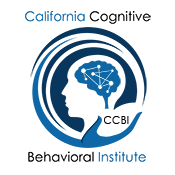Human Trafficking FYI!!
FACTS you should know: Be aware that 3,287 people are sold or kidnapped and forced into slavery every day – Not many people are. That’s 136 an hour and that’s just the reported cases. Are you aware that most of these are children and most of them are sold repeatedly for sex? Again, it’s a little known fact but it’s real and it’s happening all around us — even here in the US.
Who is Vulnerable to Trafficking?
While no demographic is immune to trafficking, victims of trafficking were found to share similar life experiences such as:
57% had been sexually abused as children.
49% had been physically assaulted.
85% were victims of incest as girls, and 90% had been physically abused.
61.5% were frequently hit, slapped, pushed, or had objects thrown at them by a member of their household.
40% of the above were kicked, hit, beaten, raped, or threatened and/or attacked with a weapon by a member of their household.
Children: Little more than half of parents closely monitor their children’s online activity. So, when a stranger asks to connect on Snapchat, it’s nearly an even shot that no one will be looking over that child’s shoulder. You can count on a child trafficker to take that bet since they know parents are not attentive to what their children are doing online
.
Do you know which social media your children are using or who they connect with online? Do they have any secret accounts and how would you find out if they did? You as a parent might want to have a conversation with your children and/or put something on their computer so you can monitor their activity. No questions are intrusive or overbearing when it comes to protecting your children from a trafficking predator. The reality of child trafficking in the United States means we have to ask these questions. Every day, thousands of children disappear into slavery. We’d like to hope our kids could never be victims but the facts simply don’t allow us that option. Understanding the facts of child trafficking is the first and most important step in prevention.
From Polaris Project: Although slavery is commonly thought to be a thing of the past, human traffickers generate hundreds of billions of dollars in profits by trapping millions of people in horrific situations around the world, including here in the U.S. Traffickers use violence, threats, deception, debt bondage, and other manipulative tactics to force people to engage in commercial sex or to provide labor or services against their will. While more research is needed on the scope of human trafficking, below are a few key statistics:
• The International Labor Organization estimates that there are 40.3 million victims of human trafficking globally.
o 81% of them are trapped in forced labor.
o 25% of them are children.
o 75% are women and girls.
• The International Labor Organization estimates that forced labor and human trafficking is a $150 billion industry worldwide.
• The U.S. Department of Labor has identified 139 goods from 75 countries made by forced and child labor.
• In 2016, an estimated 1 out of 6 endangered runaways reported to the National Center for Missing and Exploited Children were likely child sex trafficking victims.
o Of those, 86% were in the care of social services or foster care when they ran.
• There is no official estimate of the total number of human trafficking victims in the U.S. Polaris estimates that the total number of victims nationally reaches into the hundreds of thousands when estimates of both adults and minors and sex trafficking and labor trafficking are aggregated.
Airports are hubs for traffickers:
Airports are hubs for human trafficking — where adults or children are transported into forced labor or commercial sexual exploitation.
Almost every country in the world is affected by trafficking, and traffickers often use air travel to move their victims. Sometimes, victims are flown into another country on the promise of a legitimate job, other times traffickers move their victims within a country, to keep them powerless or to avoid detection.
But you can help. By being aware of the telltale signs that someone is being trafficked (contact CCBI at https://theccbi.com), you may be able to keep them from a life of modern slavery. Contact Homeland Security or the TSA or airport police.
What you should do
It’s important to remember that if you suspect someone is being trafficked, do not confront suspected traffickers or attempt to rescue suspected victims – instead call Police, Homeland Security, or call FBI. Never confront a suspected perpetrator.

